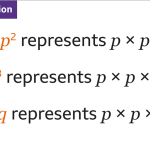Art acts as a mirror of society, encapsulating its nuances and complexities. It provides a platform for creativity and expression. As such, the appreciation of art remains vital for a well-rounded education and a comprehensive understanding of human culture.
What is Art Appreciation?
Art appreciation involves a deep understanding of the creative process and a recognition of artistic elements. These elements include color, form, and texture, which together constitute the visual language of art. Art appreciation is more than passive observation. It encourages active engagement and fosters critical thinking skills.
According to a study on the importance of art education, art nurtures emotional intelligence and creative problem-solving abilities. It serves as an outlet for students to express themselves freely and promotes empathy by enabling them to interpret diverse perspectives.
The History and Evolution of Art
Art has undergone a fascinating evolution from cave paintings to digital masterpieces, reflecting changes in societal structures, technologies, and ideas over time. The evolution of art offers intriguing insights into the development of human civilization.
Art history teaches us about the cultural, political, and social circumstances that influence art creation. For instance, the Renaissance period heralded the humanist philosophy, which significantly impacted artistic techniques and themes. Meanwhile, the modern art movement embraced abstraction, representing a shift away from realism.
The Power of Art in Education
Integrating art into education enriches the learning environment. Art can enhance students’ comprehension of complex topics. For example, the science of music reveals the interconnection between music and brain development.
Art also has therapeutic applications. Art therapy uses the creative process to improve mental health and foster emotional well-being.
Moreover, art education encourages active learning. It provides opportunities for hands-on experiences and promotes student engagement.
The Intersection of Art and Technology
Art and technology share a symbiotic relationship, influencing each other profoundly. Today, artists use technology to push the boundaries of creativity. Digital art, 3D printing, and virtual reality have reshaped the art landscape, opening up new avenues for creative expression.
Furthermore, the digital age has democratized art appreciation. Online galleries and virtual tours have made art more accessible than ever, allowing everyone to engage with works of art from around the world.
Art Appreciation in Practice
Practicing art appreciation involves both knowledge acquisition and personal reflection. It starts with learning about different art forms and understanding their historical context. Simultaneously, it requires a subjective analysis of the artwork, engaging your senses and emotions.
Art appreciation also involves recognizing the influence of art on other disciplines. For instance, the influence of Shakespearean drama on modern theatre illustrates the enduring impact of art on contemporary culture.
Conclusion
Art appreciation unlocks a deeper understanding of humanity and the world around us. It encourages empathy, fosters critical thinking, and enhances creativity. As such, fostering art appreciation is crucial for a well-rounded education and enriching life experience.
In conclusion, to quote the in this article.
Recognizing Art: More than Meets the Eye
Art appreciation involves more than just looking at a piece of work; it’s about understanding the depth and complexity of expression. According to an article from BBC, art often mirrors the prevailing culture, societal issues, and human emotions.
Therefore, understanding art requires an effort to grasp these nuances. Much like the process we laid out in our guide on decoding algebraic notation, we can unlock the deeper layers of art by analyzing its components.
Art Styles: A Reflection of Time and Space
Different art styles emerge from different periods and geographical locations. In the evolution of art from cave to digital, we can observe how each style represents a unique intersection of time, place, and cultural sensibilities.
Styles such as Renaissance, Baroque, Impressionism, Cubism, and Abstract Art each carry unique characteristics, themes, and techniques. Exploring them aids in developing a holistic understanding of art history.
Building Emotional Intelligence through Art
Just as music impacts brain development and creativity, art too can play a vital role in emotional intelligence growth. Art compels us to confront, understand, and express emotions, fostering empathy and self-awareness.
The Role of Art in Education
Incorporating art in education has proven beneficial for developing critical thinking and emotional intelligence, as discussed in The Importance of Art Education. From enhancing problem-solving skills to encouraging self-expression, art’s role in education is invaluable.
Art also provides a gateway to interactive and active learning, transforming traditional classroom dynamics into a more engaging and holistic learning environment.
The Therapeutic Effects of Art
Art serves as a conduit for human emotions, making it a potent tool for therapy. The benefits of art therapy for mental health are substantial, as outlined in our article on Art Therapy and Mental Health.
Art therapy can help individuals express feelings that they may find difficult to verbalize, offering a non-threatening medium to explore and address emotional issues.
Art and Digital Literacy
The digital age has transformed the art landscape, ushering in new forms of artistic expression and consumption. Digital art, multimedia installations, and even virtual reality art have become increasingly prevalent.
As we’ve highlighted in Digital Literacy: Education of the Future, mastering digital tools is now as essential as understanding traditional art techniques.
Conclusion: The Power of Art
Art appreciation provides a window into the depth of human creativity and expression. It offers us the chance to connect with diverse cultures, periods, and emotional landscapes. Indeed, as Forbes aptly puts it, “Art is the Highest form of hope”. Through exploring art, we come to understand both ourselves and others more deeply.
The appreciation of art is no mere pastime. It has profound implications for our education systems, promoting the development of emotional intelligence, critical thinking, and creativity. Meanwhile, the emergence of digital spaces has democratized the world of art, offering unprecedented access and new means of expression.
In conclusion, art appreciation represents an essential tool in our efforts to foster a more empathetic, understanding, and creative society. Let’s continue to celebrate, explore, and cultivate this vital cultural resource, embracing the power of art to educate, inspire, and connect.


